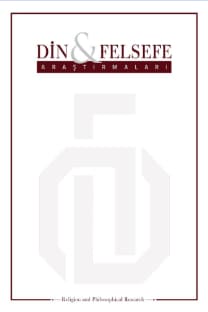Vinaya Pitaka’da Keşişler Cemaati İle Dindarlar Cemaati Arasındaki İlişki
Budist cemaati Sangha yaşam şekli açısından birbirinden tamamıyla farklı iki ayrı gruptan oluşur. Bu iki grup bütün sosyal ve ekonomik bağlarından feragat ederek belli kurallar çerçevesinde manastır hayatı yaşayan keşişler cemaati ile aile hayatı yaşamaya devam ederken Buda, Sangha ve Dharmaya iman edip manastır hayatı yaşayanları maddi açıdan destekleyenlerin oluşturduğu dindarlar cemaatidir. Budist cemaatini oluşturan bu iki grup arasındaki ilişki cemaatin devamlılığını sağlayan temel unsurdur. Bu önemi nedeniyle Vinaya Pitaka keşişler cemaati ile dindarlar cemaati arasındaki ilişkiyi birtakım dinamikler üzerine kurarak şekillendirmiştir. Bu dinamiklerin başta gelenleri karşılıklı cömertlik ilkesi, keşişler cemaatinin kendini günahsız ve saf kılma sorumluluğu ile dindarların manastır ve keşişleri maddi açıdan desteklemeleri yönündeki beklenti ve en önemlisi iki cemaatin sahip olduğu kendilerine has otoritenin sağladığı güç dengesidir. Bu dinamikler iki grup arasındaki ilişkinin karşılıklı bağımlılık, otorite, beklenti ve sorumluluklar çerçevesinde gelişmesini sağlamış ve birbirinden tamamıyla farklı iki grup bir bütün olarak Budist cemaatini oluşturmuştur. Bu makale Vinaya özelinde keşişler cemaati ve dindarlar cemaatinin ne şekilde tanımlandığını inceledikten sonra bu iki grup arasındaki ilişkinin dinamikleri üzerine yoğunlaşmaktadır. Budist kanonu Tripitaka’nın diğer metinleri bu makalenin kapsamına dahil edilmemiştir.
Anahtar Kelimeler:
Vinaya Pitaka, Sangha, Keşişler Cemaati, Dindarlar Cemaati.
The Relationship Between Monastic and Lay Comunity in Vinaya Pitaka
The Buddhist community Sangha consists of two distinct groups that are completely different from each other in terms of way of life. The monastic community renounces all their social and economic bonds and lives in a monastery within the framework of certain rules. On the other hand, the lay community while continues to live household life, believes in Buddha, Sangha, and Dharma and supports those who live monastic life. The relationship between these two groups is the basic element that ensures the continuity of the Buddhist community. Because of this importance, Vinaya Pitaka has shaped this relationship on certain dynamics. The foremost of these dynamics are the principle of mutual generosity, the responsibility of the monastic community to keep itself spiritually pure, and the most importantly, the balance provided by the unique authorities that these groups have on each other. These dynamics have shaped the relationship between these two groups based on interdependence, mutual authority, expectation, and responsibility. In this context, this article firstly analyzes what does it mean to be a monastic and to be a lay. Secondly, it is focused on the dynamics of the relationship between these two groups in Vinaya. Other texts of Tripitaka are beyond the scope of this article.
Keywords:
Vinaya Pitaka, Sangha, Monastic Community, Lay Community.,
___
- Brekke, Torkel. “Early Samgha and The Laity”. Journal of the International Association of Buddhist Studies 20/2 (1997), 7-32.
- Chakravarti, Uma. “Renouncer and Householder in Early Buddhism”. The International Journal of Anthropology 13 ( 1983), 70-83.
- Dutt, Sukumar. Early Buddhist Monachism 600 B.C-100 B.C. New York: E.P. Dutton Co, 1924.
- Gethin, Rupert. The Foundation of Buddhism. Oxford: Oxford University Press, 1998.
- Getz, Daniel A. “Precepts.” Encyclopedia of Buddhism. ed. Robert E. Buswell. 673-675. USA: Macmillan Reference, 2004.
- Gomrich, Richard F. Theravada Buddhism A Social History from Ancient Benares to Modern Colombo. London: Routledge, Second Edition, 2006.
- Hardacre, Helen. “Laity”. Encyclopedia of Buddhism. ed. Robert E. Buswell. 445-449. USA: Macmillan Reference 2004.
- Heirman, Ann ve Stephan Peter Bumbacher (ed.). The Spread of Buddhism. Leiden: Brill, 2007.
- Hirakawa, Akira. A History of Indian Buddhism From Śākyamuni to Early Mahāyāna. çev. Paul Groner. USA: University of Hawaii Press, 1990.
- Holt, Clifford. “Refuges”. Encyclopedia of Buddhism. ed. Robert E. Buswell, 714. USA: Macmillan Reference, 2004.
- Huntington, Susan L. Lay Ritual In The Early Buddhist Art of India. Amsterdam: Royal Netherlands Academy of Arts and Science, 2012.
- Hüsken, Ute. “The Eight Garudhammas”. çev.Thea Mohr ve Jampa Tsedroen. Dignity and Discipline: Reviving Full Ordination for Buddhist Nuns. 143-148. Boston: Wisdom Publications, 2010.
- Jansen, Berthe. The Monastery Rules. USA: University of California Press, 2018.
- Kieschnick, John. “Monks”. Encyclopedia of Buddhism. ed. Robert E. Busswell. 565-568. USA: Macmillan Reference, 2004.
- Lamotte, Étienne. History of Indian Buddhism From the Origins to the Śaka Era. çev. Sara Webb-Boin ve Jean Dantinne. Louvain-La-Neuve: Université Catholique de Louvain, 1988.
- Silk, Jonathan A. Managing Monks Administrators and Administrative Roles in Indian Buddhist Monasticism. Oxford: Oxford University Press, 2008.
- Schopen, Gregory Bones. Stones, and Buddhist Monks, Collected Papers on the Archaeology, Epigraphy, and Texts of Monastic Buddhism in India. USA: University of Hawaii Press, 1997.
- Schopen, Gregory. Buddhist Monks and Business Matters Still More Papers on Monastic Buddhism in İndia. Honolulu: University of Hawaii Press, 2004.
- Schopen, Gregory. Buddhist Nuns, Monks, and Other Wordly Matters Recent Papers on Monastic Buddhism in India. Honolulu: University of Hawaii Press, 2014.
- The Book of the Discipline (Vinaya-Pitaka). çev. I. B. Horner. Vol.VI. Oxford: The Pali Text Society, 2004.
- The Book of the Discipline (Vinaya-Pitaka). çev. I. B. Horner. Vol.I. London: Luzac and Company Ltd, 1949.
- The Book of the Discipline (Vinaya-Pitaka). çev. I. B. Horner. Vol.II. Oxford: The Pali Text Society, 2004.
- The Book of the Discipline (Vinaya-Pitaka). çev. I. B. Horner. Vol.III. Oxford: The Pali Text Society, 2004.
- The Book of the Discipline (Vinaya-Pitaka). çev. I. B. Horner. Vol.IV. Lancester: The Pali Text Society, 2007.
- The Book of the Discipline (Vinaya-Pitaka). çev. I. B. Horner. Vol.V. Oxford: The Pali Text Society, 2001.
- Tieken, Herman. “The Buddhist Pavāranā Ceremony According to the Pāli Vinaya”. Journal of Indian Philosophy 30/3 (2002), 271-289.
- Tsomo, Karma Lekshe. “Nuns”. Encyclopedia of Buddhism. ed. Robert E. Buswell. 606-611. USA: Macmillan Reference, 2004.
- Wijayaratna, Mohan. Buddhist Monastic Life According to the Texts of the Theravāda Tradition. çev. Claude Grangier ve Steven Collins. New York: Cambridge University Press. 1990.
- Yayın Aralığı: Yılda 2 Sayı
- Başlangıç: 2018
- Yayıncı: Din Felsefesi Derneği
